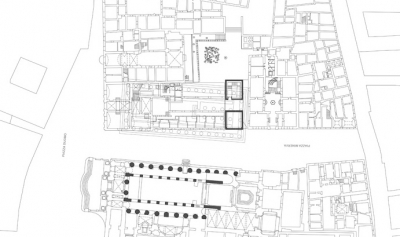Access pavilion to the Artemision excavations, Siracusa, Italy
In the past, it was common practice to build with and on the remains of ancient buildings, and architecture attempted only to delay the ultimate, inevitable loss of buildings.
The creation of a little pavilion building puts emphasis on the important area preserved by the municipal building s basement, the Ionian temple in the heart of the Ortigia Island, where the Acropolis of the ancient city once stood, some Sicilian huts of the Late Bronze Age and the crypt of the S. Sebastianello s church, puting archeology as active material of architecture. The project create a connection between the city and the "buried" area of excavation, now unknown.
The materials and interior lighting of the pavilion has been interpreted as a contemporary evocation of a hypogeum.
The building is spread over an area of 200 meters, and the underground interested 1000 meters of surface.
The frame-type costruction of the pavilion does not rest directly on archaeological site but on elastic bearing that required the creation of structural seismic joint detaches the building from the ground and gives the compact mass of the building a sense of levitation. The pavilion create a sense of urban cohesion that reintroduces continuity to the façades on Piazza Minerva, "dressed" by a homogeneous layer of limestone blocks.
The outer cladding of the building is characterized by a few emphatic texture walls, a masonry surface that recalls a medieval or Catalan type of construction.
This means that the Piazza Minerva front is in a sense silent, listening to the sounds that come from the stunning monuments around it. The only accent is a vertical cut in the wall, which acts as a direct visual and spatial link between the remains of the Ionian temple and the corner s column of Athena s temple.

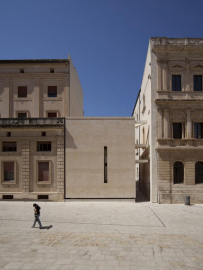
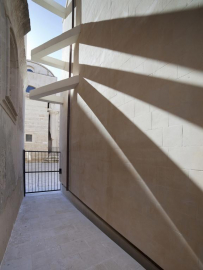
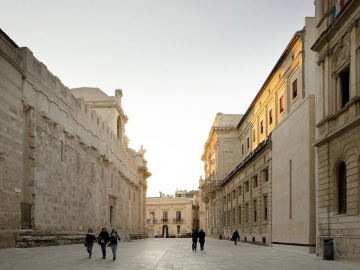
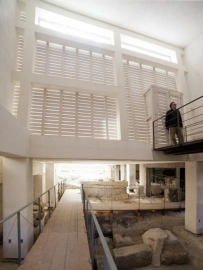
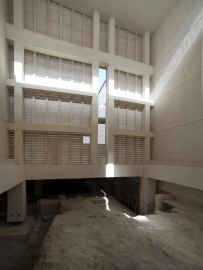
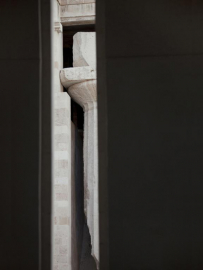
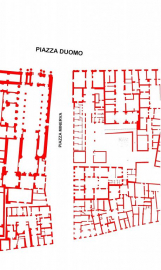
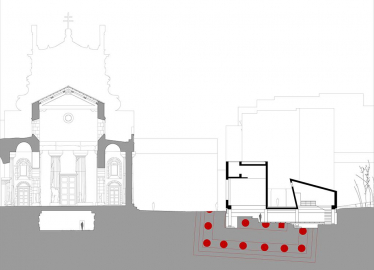
 copy.jpg)
